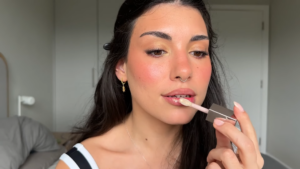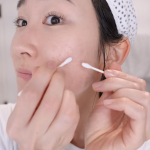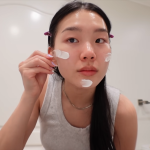Creating a personalized skincare routine tailored to your unique skin type can be the key to achieving a healthy, radiant complexion. With so many products and conflicting advice available, it can be overwhelming to know where to start. This guide will help you understand your skin type, identify your skincare needs, and build an effective regimen that works for you.
Understanding Your Skin Type
Before you can create a personalized skincare routine, it’s essential to determine your skin type. There are five primary skin types: normal, oily, dry, combination, and sensitive. Here’s a brief overview to help you identify yours:
Normal Skin: Well-balanced, not too oily or dry, with few imperfections and a smooth texture.
Oily Skin: Characterized by excess sebum production, leading to a shiny appearance, enlarged pores, and a tendency to develop acne.
Dry Skin: Often feels tight, rough, or flaky, with less elasticity and a dull complexion.
Combination Skin: Features both oily and dry areas, typically with an oily T-zone (forehead, nose, and chin) and dry cheeks.
Sensitive Skin: Easily irritated by environmental factors, skin care products, or weather changes, often resulting in redness, itching, or burning.
To determine your skin type, observe your skin’s behavior throughout the day, particularly in the morning and late afternoon. Take note of any areas that become oily, dry, or irritated.
Building Your Skincare Routine
Once you’ve identified your skin type, follow these steps to create a personalized skincare routine:
1. Cleansing
Cleansing is the foundation of any skincare routine. It removes dirt, oil, and impurities that can clog pores and cause breakouts. Choose a cleanser suited to your skin type:
Normal Skin: Opt for a gentle, pH-balanced cleanser.
Oily Skin: Use a foaming or gel cleanser to remove excess oil.
Dry Skin: Choose a hydrating, cream-based cleanser.
Combination Skin: Look for a balanced cleanser that can address both oily and dry areas.
Sensitive Skin: Select a fragrance-free, hypoallergenic cleanser.
Cleanse your face twice daily, in the morning and evening, to keep your skin clean and refreshed.
2. Exfoliation
Exfoliation helps to remove dead skin cells, promoting cell turnover and a smoother complexion. However, it’s important not to over-exfoliate, as this can damage your skin’s barrier. Aim to exfoliate 1-2 times per week, depending on your skin type:
Normal Skin: Use a gentle exfoliant with fine particles or mild acids.
Oily Skin: Choose a chemical exfoliant with salicylic acid to unclog pores.
Dry Skin: Opt for a gentle, hydrating exfoliant.
Combination Skin: Exfoliate the T-zone with a stronger product and use a milder one on dry areas.
Sensitive Skin: Select a very mild exfoliant, such as a gentle enzyme peel.
3. Toning:
Toners can help balance your skin’s pH, remove any remaining impurities, and prepare your skin for subsequent steps. Select a toner based on your skin type:
Normal Skin: Use a hydrating toner with antioxidants.
Oily Skin: Choose a toner with salicylic acid or witch hazel to control oil production.
Dry Skin: Opt for a moisturizing toner with hyaluronic acid or glycerin.
Combination Skin: Use a balancing toner that addresses both oily and dry areas.
Sensitive Skin: Select a soothing toner with chamomile or aloe vera.
4. Treatment
This step allows you to target specific skin concerns, such as acne, hyperpigmentation, or fine lines. Depending on your needs, incorporate the following treatments:
Normal Skin: Use a serum with antioxidants to maintain overall skin health.
Oily Skin: Incorporate a treatment with salicylic acid or niacinamide to control oil and prevent breakouts.
Dry Skin: Choose a hydrating serum with hyaluronic acid or ceramides.
Combination Skin: Use different treatments on different areas, such as a hydrating serum on dry patches and a salicylic acid serum on the T-zone.
Sensitive Skin: Select gentle treatments with soothing ingredients like centella asiatica or oat extract.
4. Moisturizing
Moisturizing is crucial for maintaining your skin’s hydration and barrier function. Pick a moisturizer that suits your skin type:
Normal Skin: Use a lightweight, hydrating moisturizer.
Oily Skin: Choose a gel-based, oil-free moisturizer.
Dry Skin: Opt for a rich, emollient moisturizer.
Combination Skin: Use a lighter moisturizer on oily areas and a richer one on dry patches.
Sensitive Skin: Select a fragrance-free, hypoallergenic moisturizer with soothing ingredients.
5. Sun Protection
Protecting your skin from UV damage is essential to prevent premature aging and skin cancer. Apply a broad-spectrum sunscreen with SPF 30 or higher every morning, regardless of your skin type:
Normal Skin: Any broad-spectrum sunscreen will work.
Oily Skin: Use a mattifying, oil-free sunscreen.
Dry Skin: Choose a hydrating sunscreen.
Combination Skin: Opt for a lightweight, non-greasy sunscreen.
Sensitive Skin: Select a mineral sunscreen with zinc oxide or titanium dioxide.
Additional Tips for a Successful Skincare Routine
- Patch Test New Products: Before applying a new product to your entire face, perform a patch test to check for any adverse reactions.
- Consistency is Key: Stick to your routine consistently to see the best results. It may take a few weeks to notice significant improvements.
- Listen to Your Skin: Adjust your routine as required based on your skin’s changing needs, such as during different seasons or hormonal changes.
- Stay Hydrated and Eat Well: Drink plenty of water and eat a balanced diet rich in vitamins and antioxidants to support your skin from within.
- Seek Professional Advice: Consult a dermatologist for personalized recommendations and treatments if you have persistent skin concerns.
Creating a personalized skincare routine tailored to your unique skin type is a journey that requires patience and experimentation. By understanding your skin’s needs and selecting the right products, you can achieve a healthier, more radiant complexion. Remember, skincare is not one-size-fits-all, so take the time to find what works best for you.








